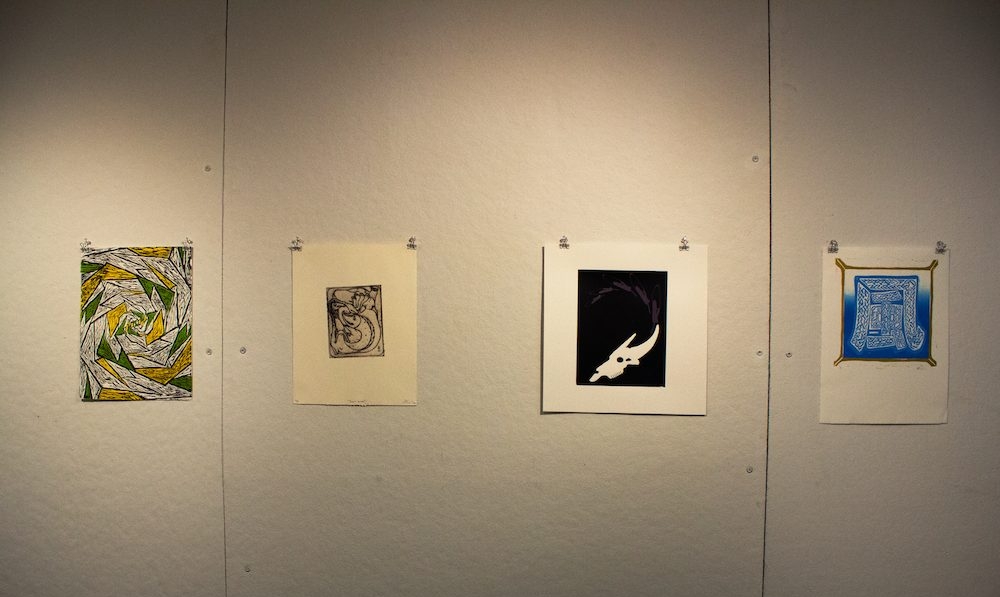Over the summer, the University of Maryland, Baltimore County opened multi-user all-gender restrooms in five buildings on campus in an effort to accommodate LGBTQ students who are uncomfortable using gendered restrooms.
Students may recall that all single-user restrooms at UMBC became all-gender restrooms (AGRs) in 2018. This created 41 single-user AGRs inside academic and student life buildings and 16 facilities in the residence halls. While this was a major achievement in the push for increased accessibility on campus, one stall per building was not enough to fulfill the demand for such facilities, and many buildings still lacked an AGR altogether.
This prompted the need for multi-user AGRs on campus so that more people could benefit from the facilities. “Imagine if there was only one single-user restroom for everyone… and there was only one per building,” said junior psychology major Shannon Ashley. Ashley is a member of the All-Gender Restroom Steering Committee, a group of “students, faculty and staff dedicated to making a more welcoming environment on campus for transgender and gender non-conforming people to just use the restroom.” The committee, which formed early last semester, brought together advocates from organizations like the LGBTQ Student Union and the LGBTQ Faculty/Staff Association to tackle the issue of AGRs. The committee played an invaluable role in the creation of the multi-user facilities.
The committee worked with various people on campus to get the job done. “We would get people who work in Facilities [Management] to come to speak to us,” Ashley said about the committee’s meetings. According to President Hrabowski, “it has been a very constructive process of shared governance… this is about respect and support of all people on campus.”
Multi-user AGRs are now open in the new Interdisciplinary Life Sciences building, the Performing Arts and Humanities building, the Fine Arts building, Sherman A building, and the Information Technology and Engineering building. The AGR steering committee is working with Facilities Management to install multi-use AGRs in additional buildings on campus during the 2019-2020 academic year, including the Biological Sciences building, the library, the Administration building, and the Retriever Activities Center.
Ashley noted that the process of creating a multi-user AGR was not as easy as opening the single-user facilities, which required a simple change of signage in most cases. For the multi-user facilities, “[the committee] had to find a restroom to start with,” Ashley said, citing strict anti-discrimination laws that require traditional gender-segregated restrooms to be placed in pairs on each floor of a building. This meant that on floors with just one male and one female restroom, neither could be converted into an AGR.
Luckily, the committee found that the second floor of Sherman Hall contained two female restrooms and only one male restroom. This floor, which spans across both Sherman A and B buildings, originally had two male restrooms until one was closed due to construction. This left the floor unbalanced and in violation of the law. For this reason, the committee was granted permission to create UMBC’s first multi-user AGR using the extra female restroom. “Once we had one [multi-user AGR], things moved much faster,” Ashley said.
The steering committee receives support from many other organizations on campus. The Women’s Center has been a long-time advocate for AGRs around campus. According to Amelia Meman, the Program Coordinator for the Women’s Center, talk of creating AGRs has floated around campus for years but “the problem was that there was no sense of urgency in the matter.” However, initiatives such as Retriever Courage and support from the LGBTQ Student Union gave momentum to the idea and turned it into a reality.
As expected, not everyone has been supportive of the new restrooms. The Women’s Center has yielded “a couple transphobic comments” and “passive complaints” about the new multi-user restrooms, but Meman said that the unveiling of these facilities has been fairly quiet. The bottom line is that “people just need a safe place to use the restroom,” she said.
Meman hopes that the push for increased accessibility on campus will not stop here, and promises that the Women’s Center will continue “providing continued advocacy.” Although the new multi-user AGRs on campus are a great first step, many buildings still lack such facilities, “especially on Academic Row.” Meman specifically noted that this could be difficult for transfer and commuter students who often spend most of their time in this area.
To address this concern, the steering committee is working to provide multi-user AGRs in the rest of the academic buildings on campus over the next two to three years. Although both Ashley and Meman note that there is still much work to be done, they seem hopeful that bigger changes are coming to campus.
Editor’s Note: This article has been corrected to clarify that the AGR steering committee works exclusively on multi-user AGRs, and to identify the correct locations of the current and projected multi-user AGRs. The correction also addresses the timeline for the project’s completion. Corrected Sept. 18, 2019.
Photo: The all-gender restroom sign, designed by a UMBC staff member. Photo by Eliska Merchant-Dest.


Comments are closed.